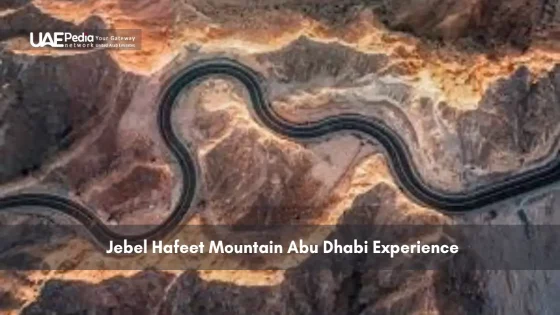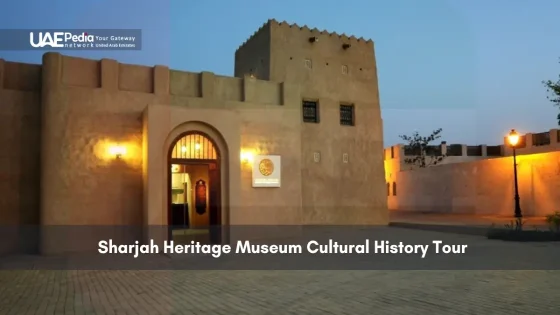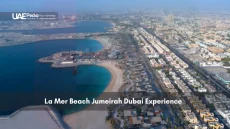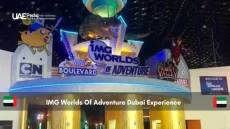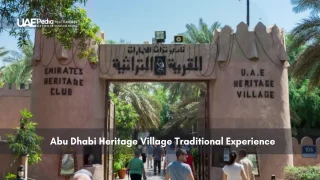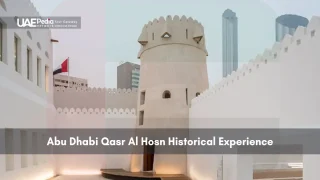What if I told you the world’s most futuristic city still whispers secrets from the 1800s? Tucked between skyscrapers, a maze of wind towers and coral walls holds the answer—a place where every alley hums with stories of pearl divers, merchants, and Bedouin traditions.
This hidden treasure—once the heart of Dubai’s trading community—offers more than photo ops. Its sunbaked buildings, crafted from local materials like gypsum and palm wood, showcase ingenious Emirati design. You’ll find museums in restored homes, art galleries in former warehouses, and cafes where the aroma of cardamom coffee mingles with history.
We’ll walk you through this cultural time capsule like a friend pointing out their favorite neighborhood spots. From tracing the origins of Dubai’s iconic wind towers to understanding why preservation matters (hint: it connects to ancient forts across the Emirates), every detail reveals layers of heritage.
Here’s what makes this area unforgettable:
- Time travel made real: Touch walls built from coral reefs and see how communities thrived before air conditioning
- Living museums: Galleries and cultural centers that turn history into hands-on experiences
- Design secrets: Architectural features that kept homes cool in 45°C heat—no electricity needed
Discovering the History of the Dubai Al Bastakiya Historical District
Ever wondered how a 19th-century trading post became a cultural landmark? Let’s rewind to when Persian merchants settled along Dubai Creek, building homes from coral blocks and palm fronds. Their legacy lives in narrow lanes where barasti (palm-leaf) roofs once shaded pearl traders haggling over Arabian Gulf treasures.
Origins and Early Beginnings
In the late 19th century, merchants from Persia’s Bastak region created a microcosm of their homeland. They constructed houses with shaded courtyards and wind towers—early AC prototypes. The iconic Fahidi Fort, originally a defense structure, now houses the dubai museum. Its walls, made from crushed seashells, whisper tales of Bedouin resilience.
Evolution Through the Centuries
By the 1990s, this area faced demolition threats. Preservationists intervened, restoring 50+ buildings to their original glory. Today, you’ll spot art galleries in former merchant homes and cafes where traders once sipped gahwa (Arabic coffee).
| Era | Transformation | Key Feature |
|---|---|---|
| 1890s | Trade hub establishment | Coral-block houses |
| 1970s | Modernization threats | Fahidi Fort restoration |
| 1990s | Cultural revival | Museum expansion |
| 2020s | Tourist destination | Interactive heritage displays |
The architecture here isn’t just pretty—it’s genius. Thick walls deflect heat, while wind towers funnel breezes downward. This blend of form and function deepens cultural understanding, showing how communities thrived in harsh climates.
Architectural Marvels and Cultural Landmarks
Picture a place where every brick tells two stories—one of survival in harsh desert heat, another of artistic vision. Along the shimmering dubai creek, this neighborhood stands as a masterclass in form meeting function, where even the breeze gets sculpted into cool relief.
Traditional Wind Towers and Coral Constructions
Those iconic wind towers aren’t just pretty silhouettes—they’re 19th-century climate tech. Designed to catch gusts from any direction, these hollow pillars funneled air downward through homes. Paired with coral-block walls (harvested from the creek’s seabed), they created natural AC systems. Touch the textured surfaces—you’ll feel crushed seashells mixed with gypsum, materials chosen for their heat-deflecting magic.
Iconic Heritage Sites and Museums
Today, these spaces pulse with new life. Merchant houses now host galleries showcasing Emirati art, while former storage rooms display contemporary installations. Don’t miss the creek-facing buildings—their arched windows frame water views unchanged for centuries. As one curator told us: “Every brushstroke here honors the past while painting tomorrow.”
| Architectural Element | Original Purpose | Modern Influence |
|---|---|---|
| Wind Towers | Natural cooling | Inspires eco-friendly designs |
| Coral Walls | Heat insulation | Featured in luxury resorts |
| Barasti Roofs | Sun protection | Revived in public art |
Strolling the creek-side paths, you’ll spot how the city’s growth mirrors its respect for heritage. Galleries here don’t just hang art—they transform spaces where traders once counted pearls. It’s this blend of grit and grace that makes the area a living blueprint—proof that true art withstands time’s test.
Experiencing Local Art, Souks, and Cuisine
Imagine your fingers tracing centuries-old walls while your nose catches cardamom-scented breezes—this is where culture becomes tangible. Wander through creative spaces where textiles whisper tales and saffron-infused dishes spark conversations across generations.
Art Galleries and Cultural Spaces
The Majlis Gallery turns history into art. Housed in a 19th-century courtyard, its white walls showcase contemporary Middle Eastern works. “We’re not just displaying paintings—we’re hosting dialogues between eras,” says a local curator. Nearby, converted merchant homes now serve as art galleries blending calligraphy with digital installations.
Don’t miss the textile souks. Vendors here trade stories alongside embroidered fabrics. One stall owner grinned as she explained: “My great-grandfather sold pearls where these scarves now hang—same walls, new treasures.”
Traditional Emirati Dining and Local Flavors
At the Arabian Tea House, lemon-mint drinks arrive in copper cups beside date-stuffed pastries. Their traditional Emirati breakfast platter—fluffy khameer bread, scrambled eggs with turmeric—tastes like heritage on a plate. For dinner, try harees (slow-cooked wheat with meat) at communal tables under fairy lights.
“Every meal here is a handshake between Bedouin roots and modern tastes.”
| Experience | Traditional Element | Modern Twist |
|---|---|---|
| Art Spaces | Wind tower ventilation | Interactive digital exhibits |
| Dining | Floor seating | Fusion spice blends |
| Shopping | Handwoven baskets | Upcycled material art |
Pro tip: Visit museums before lunch—their air-conditioned halls offer midday relief. Then hunt for frankincense in spice souks, where vendors gladly explain saffron grades. As sunlight fades, watch art galleries glow like lanterns, proving creativity never sleeps here.
Insider Tips: When and How to Visit
Want to explore without melting into the pavement or playing hide-and-seek with landmarks? Timing and transit make all the difference here. Let’s crack the code for a seamless experience.
Best Time to Visit Based on Weather and Seasons
November through March is golden hour for explorers. Daytime temps hover around 25°C (77°F)—perfect for strolling shaded lanes. Mornings before 10 AM? Pure magic. The air carries a crispness you’ll miss by noon.
- December-February: Peak season with cooler nights
- April/October: Shoulder months with shorter crowds
- Skip July-August: 45°C heat turns museums into lifesavers
Efficient Navigation and Public Transport Options
The government’s new wayfinding system helps immensely—look for bronze plaques at key attractions. Metro users: Exit at Al Fahidi Station (Green Line), then a 7-minute walk through heritage gates. Taxis drop you closer, but navigating narrow lanes on foot unlocks hidden courtyards.
| Transport | Pros | Insider Hack |
|---|---|---|
| Metro | Air-conditioned | Buy Nol Card in advance |
| Bus | Route 33 stops nearby | Check RTA app for timings |
| Taxi | Doorstep access | Request “Al Fahidi Quarter” |
Pro tip: Download the RTA Dubai app for real-time updates. Summer visitors—plan indoor attractions between 11 AM-3 PM when the air feels like hot soup. Evening walks post-6 PM? Pure poetry with lit-up wind towers.
Tours, Events, and Unique Cultural Experiences
How do you turn dusty lanes into time machines? Ask the storytellers leading guided tours through the Fahidi Historical Neighborhood. Their footsteps reveal hidden courtyards where merchants once traded spices, while interactive maps on tablets overlay 19th-century scenes onto modern paths.
Guided Walking Tours and Interactive Programs
Morning tours shine brightest here. Local guides decode architectural secrets—like how wind towers work—while sharing tales of pearl divers. At the Sheikh Mohammed Centre for Cultural Understanding, programs let you grill experts about Emirati traditions over dates and coffee. “Ask anything—we’re here to connect dots,” says a staff member.
Special events transform history into hands-on play. Try calligraphy workshops in restored homes or night walks where projectors animate walls with Bedouin poetry. The Fahidi Historical Neighborhood becomes a stage during heritage festivals, with actors reenacting barter scenes using replica coins.
| Experience | Duration | Highlight |
|---|---|---|
| Heritage Walk | 90 mins | Live demonstrations of cooling techniques |
| Cultural Q&A | 60 mins | Direct dialogue with Emirati hosts |
| Artisan Demo | 45 mins | Watch palm-frond weaving |
Booking through the Sheikh Mohammed Centre ensures authenticity. Their tour packages often include exclusive access to private courtyards. For deeper dives, join their “Cultural Meals” program—you’ll learn etiquette while sharing Emirati dishes.
Want to explore this heritage hub like a pro? Time your visit with the Fahidi Historical Neighborhood’s quarterly lantern festival. Lit wind towers and shadow puppetry make history feel alive—no textbook required.
Exploring Surrounding Attractions and Hidden Gems
Think you’ve seen it all? The magic spills beyond ancient walls into vibrant markets and creative hubs. Let’s uncover treasures that turn a simple stroll into a cultural scavenger hunt.
Where Waterways Meet Wonder
Just steps away, Dubai Creek shimmers with abra boats ferrying traders like they’ve done for centuries. Cross to Bur Dubai’s textile souk—a rainbow of silks where vendors still haggle with hand gestures. “This is where threads become stories,” laughs a shopkeeper showing embroidered camel designs.
Artisans & Modern Mavericks
The Mohammed Centre for Cultural Understanding bridges past and present. Their workshops in Bur Dubai reveal palm-frond weaving techniques unchanged for generations. Meanwhile, the annual SIKKA Art Fair transforms alleyways into open-air galleries showcasing Emirati futurism.
“We’re not preserving artifacts—we’re keeping conversations alive.”
| Attraction | Cultural Connection | Insider Tip |
|---|---|---|
| Spice Souk | Saffron trading since 1900s | Sniff before buying—fresh saffron smells sweet |
| SIKKA Art Fair | Emerging UAE artists | Attend night installations for light shows |
| Bur Dubai Walk | Heritage architecture | Look for hidden courtyard cafes |
Time your visit with the Mohammed Centre’s cultural breakfasts. You’ll taste cardamom-infused dishes while learning Bedouin poetry rhythms. Later, hunt for silver jewelry in Bur Dubai’s side lanes—craftsmen here stamp patterns older than the skyscrapers.
Pro tip: The historical neighborhood’s cultural heritage extends through these surrounding gems. Let the Mohammed Centre Cultural team map your route—their free guides reveal which souk stalls donate to local artisans.
Parting Insights and Lasting Impressions
Have you ever stood where centuries converge, feeling time’s layers beneath your feet? This quarter thrives through a delicate dance—past preservation methods fueling today‘s creative energy. Four generations of architecture whisper through coral walls, proving innovation isn’t new here—it’s inherited.
Every museum visit becomes a bridge. You’ll touch artifacts from the 19th century while hearing how artists reinterpret traditions. Galleries double as time capsules—their walls display Bedouin weaving patterns beside AI-generated desertscapes. “We’re not just curating history,” explains a local guide. “We’re hosting conversations across 200 years.”
Three lessons linger after exploring: Wind towers teach sustainable design. Shared meals reveal cross-century hospitality. Hidden courtyards remind us that discovery never ends. Come twilight, you’ll realize this place isn’t frozen in the past—it’s a living blueprint for today.
Let your final stop be the coffeehouse where 1890s merchants once traded. Sip cardamom-infused Arabic coffee as sunlight gilds the lanes. Then return—because every century etched secrets here, waiting for your next visit to reveal them. Ready to trace time’s fingerprints elsewhere? The galleries and museums you’ve explored today are just the first chapter.
Aim for weekday mornings between 9 AM–11 AM or cooler months (November–March). Evenings get lively during events like the Sikka Art Fair, but early hours let you wander the lanes peacefully.
Absolutely! The Arabian Tea House serves classics like machboos and luqaimat. For a cultural deep-dive, book a meal at Sheikh Mohammed Centre for Cultural Understanding—you’ll eat cross-legged in a majlis!
Yes! Free walking tours by Dubai Culture often cover coral-block houses and wind tower engineering. Private guides at Fahidi Fort’s Dubai Museum also decode how these “desert ACs” worked pre-electricity.
Take the Green Line Metro to Al Fahidi Station—it’s a 7-minute walk. Abra rides from Deira (1 AED) drop you at Bur Dubai Abra Station, with the district just past the textile souk.
Don’t miss Majlis Gallery for local art or XVA Café’s boutique. Peek into Coin Museum’s courtyard for photo ops, and haggle for spices at nearby Bur Dubai Souk—it’s less touristy than Gold Souk!
Some narrow lanes have uneven stones, but main paths are manageable. Museums like Dubai Museum have ramps. Weekdays are easier to navigate tight spaces than crowded weekends.


